10 Scavenger Birds That Eat Dead Animals (With Pictures)
Last Updated on
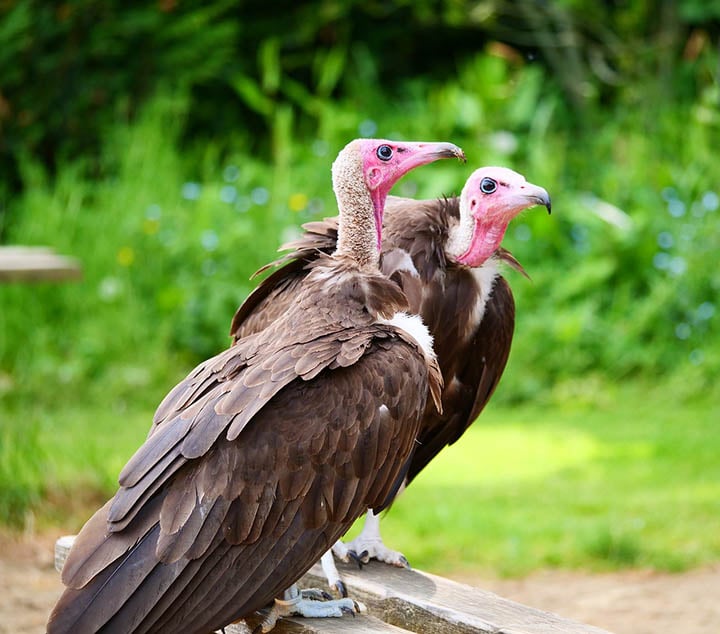
Even though the thought of picking up and eating rotting carcasses seems unfathomable to us, scavenging is a critical part of the ecosystem. Without scavengers, dead carcasses would stay to rot on the ground to contaminate our food and water sources.
Although you are likely familiar with vultures eating dead meat, many other birds often eat carrion as well. You might be surprised at what seemingly majestic birds will sink their claws into decomposing meat for a tasty treat.
To learn about 10 common birds that eat dead animals, read on. Keep in mind that this is not a comprehensive list of bird scavengers, but it includes some of the birds most likely to scavenge.

What Is Carrion?
Before diving into the 10 scavenger birds that like to eat dead animals, let’s talk about carrion. When you read about scavenger animals, carrion is a word you will read a lot. Carrion simply refers to the decaying flesh of dead animals, aka the food source of scavengers.
The 10 Most Common Scavenger Birds
1. Black Vulture
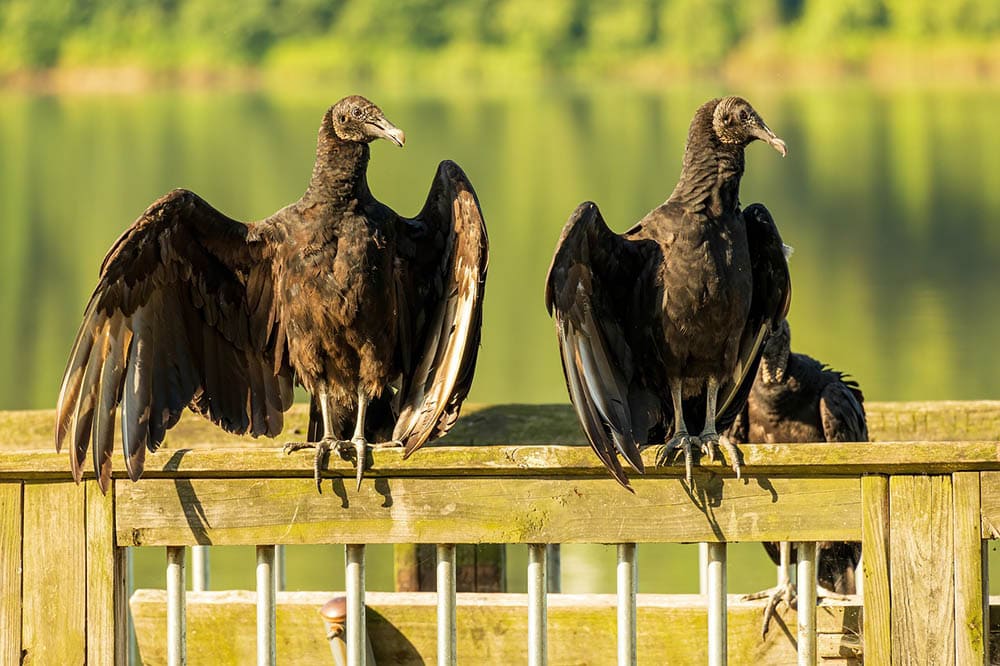
The first bird that people think of when it comes to scavenging is vultures. One vulture in particular that scavenges often is the Black Vulture. As its name suggests, the Black Vulture has a black face, chest, and body. These vultures are primarily found in Central and South America, but they also extend into the southern United States.
Black Vultures almost exclusively eat carrion, but they will also eat any eggs or newborn animals they can get their claws on. These birds often rely on their sense of eyesight to find meals, though they sometimes follow other vultures to find them as well.
2. Egyptian Vulture
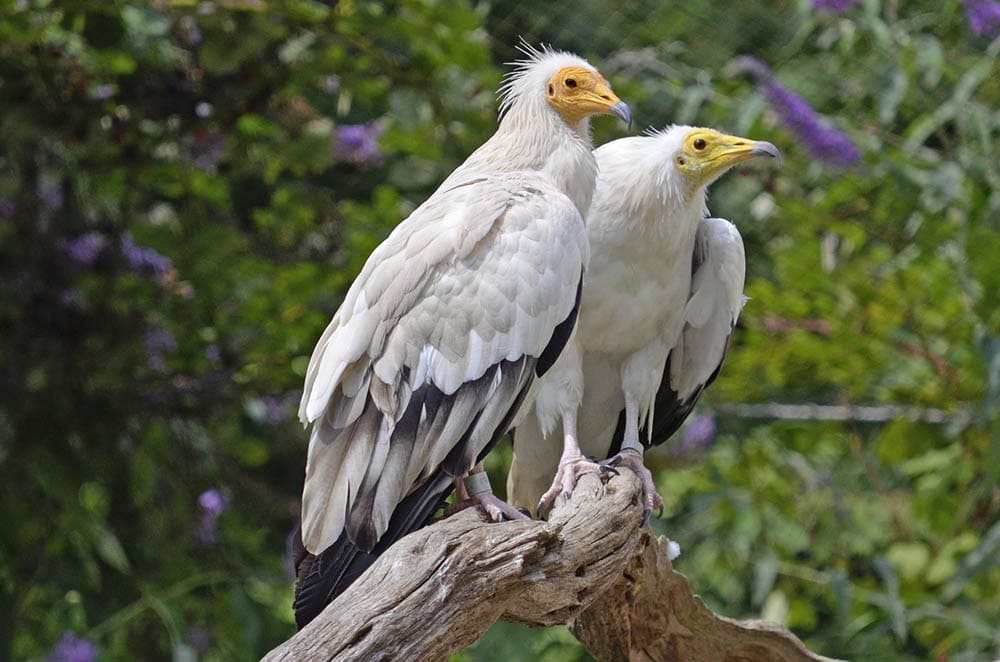
Unlike the Black Vulture, the Egyptian Vulture is actually kind of pretty. In many ways, the Egyptian Vulture looks like a vulture and an eagle hybrid. Either way, Egyptian Vultures primarily eat carrion. Much like other vultures, this species is opportunistic and will eat small birds, reptiles, and mammals as well.
What’s really interesting about Egyptian Vultures is that they are one of the few birds that use tools to get their meals. They are known to use rocks to break open eggs or roll up twigs for nests. This just goes to show that although vultures may sound like nasty animals, they are actually highly intelligent.
3. Hooded Vulture
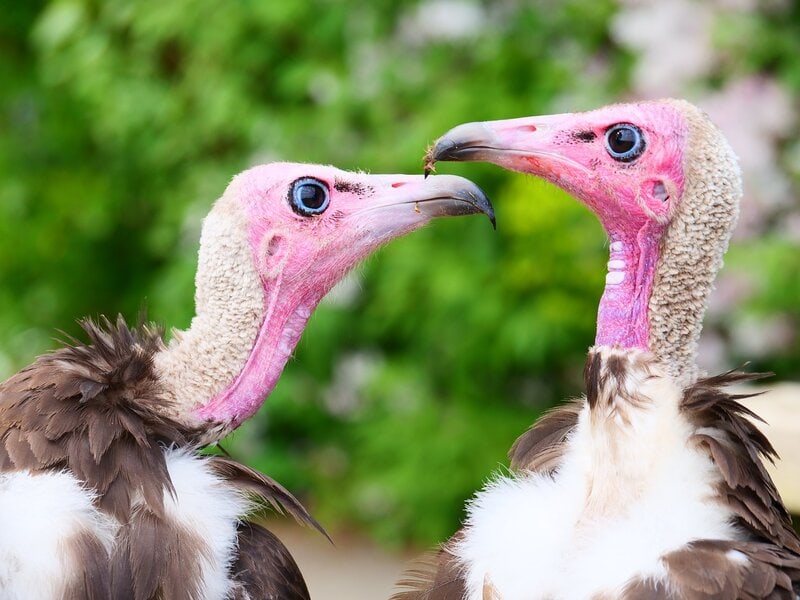
Whereas the Egyptian Vulture was pretty and Black Vulture at least cool looking, the Hooded Vulture sort of looks like death with feathers. This vulture lives in Sub-Saharan Africa where it can be found all throughout the continent.
Like the other vultures we have looked at, Hooded Vultures primarily only eat carrion. Because of their location, Hooded Vultures often eat dog carcasses and other large animals, even elephant carcasses. Unfortunately, this vulture is critically endangered because it has lost 85% of its population over the last 50 years. Hunting, poisoning, and loss of habitat are the main culprits for this sharp decline.
4. Griffon Vulture
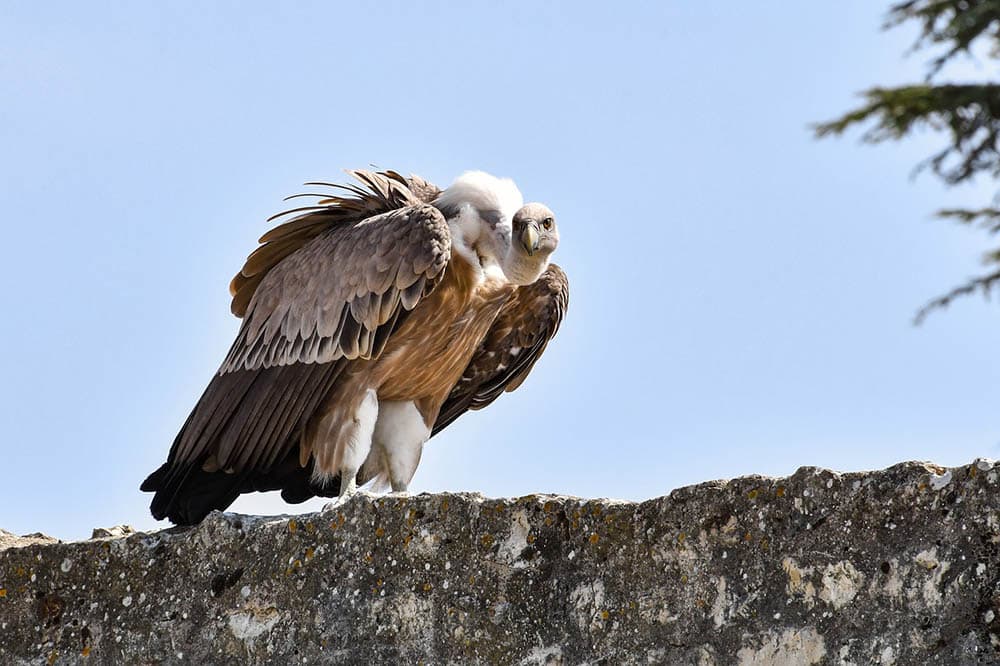
The Griffon Vulture is a vulture of many names. Some people call it the Eurasian Griffon, often causing this vulture to be confused with the Rupples Griffon Vulture, which is a completely different type of vulture. The Griffon Vulture has short tail feathers, white feathers, and broad wings.
Just like the other vultures, Griffon Vultures feed primarily on carrion. In contrast to many other vultures, Griffon Vultures like to stay far away from humans and often nest in high cliffs for easy flying access since they like to soar over open areas.
5. Turkey Vulture

When most people think of a vulture in the United States, they think of the Turkey Vulture. Sometimes, the Turkey Vulture is also called a Turkey Buzzard, Buzzard, Jim Crow, or Carrion Crow. It is considered the most widespread vulture in the Western Hemisphere.
Turkey Vultures span most of the Western Hemisphere, including South America, Central America, and the United States. You can occasionally find Turkey Vultures in Canada, though they are less common in Canada than in the rest of the hemisphere. Unlike many other vultures, Turkey Vultures are of Least Concern.
6. Condor
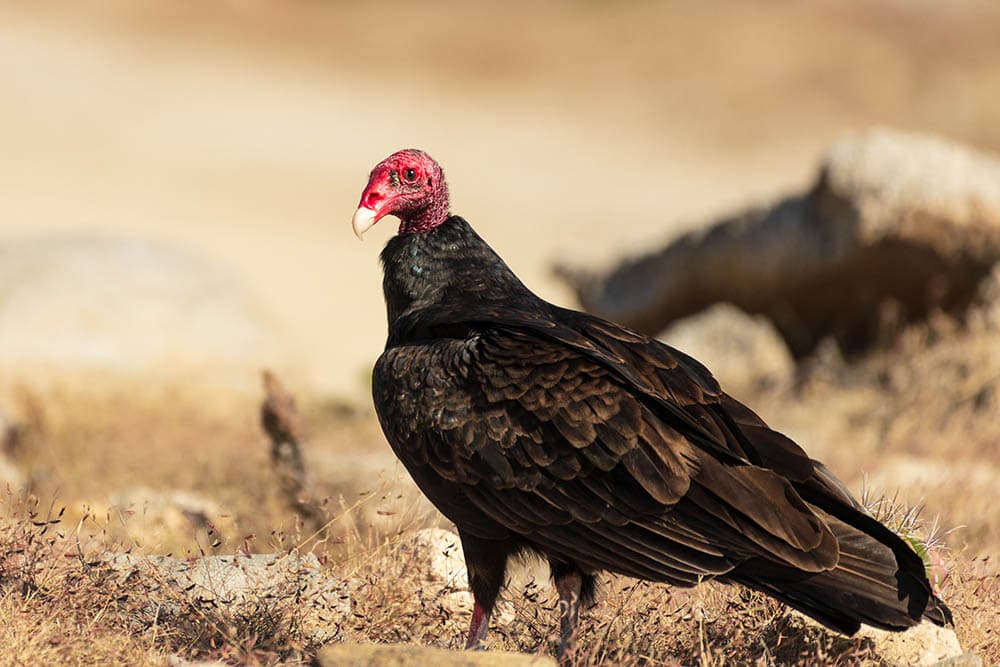
The Condor is a common name for two types of vultures, including the Andean Condor and the California Condor. Each Condor type is named after the area they are found in. Condors have large wings that they soar on while scoping out meals.
Just like all the other vultures, Condors primarily eat carrion, but they are opportunistic and will eat just about anything they can get ahold of.
7. Crested Caracara

The Crested Caracara is a beautiful bird of prey within the Falcon family. This bird is primarily found in South America, but it also creeps in the southernmost United States, such as in Florida. Oddly enough, Crested Caracaras are occasionally spotted way far West, such as in San Francisco, or as far north as Nova Scotia.
Crested Caracaras are known as being opportunistic raptors that are almost always on the hunt. These birds primarily eat carrion and steal from other raptors. Surprisingly, Crested Caracaras are more successful at getting carrion than many vulture types.
8. Bald Eagle

Bald Eagles represent strength and freedom for the United States, but little do many Americans know that this majestic bird can get caught chowing down on decaying carcass. During the summer months, Bald Eagles prefer getting fresh fish on their own, but they will steal dead fish from juveniles.
During the winter especially, Bald Eagles often kick their scavenging up a notch and will eat carrion. As non-patriotic as it may sound, Bald Eagles eat carrion and act as scavenger birds, no matter how majestic they are.
9. African Fish Eagle

Another eagle type that is known to scavenge is the African Fish Eagle. At first glance, the African Fish Eagle actually looks a lot like the Bald Eagle. This eagle is found in Sub-Saharan Africa, and it is the national bird of both Zambia and Namibia.
Much like the Bald Eagle, the African Fish Eagle hangs out by water so that they can eat fish, hence their name. Most often, African Fish Eagles hunt on their own, but they are known to steal fish from other birds, classifying them as scavengers.
10. Crow

The last scavenger on our list is the Crow. There are many types of Crows around the globe, and many of them have one thing in common: they often scavenge for food. Crows are so prone to savaging for carrion that one species in particular is even named the Carrion Crow.
This scavenging nature of Crows is why they have inspired so many writers and artists to create creepy stories and pictures in their honor.
Related Read: 5 Types of Black Bird Species: Colors and Shapes

Are Scavengers Good for The Environment?
Even though it may sound gross to eat carrion, scavengers play an important role in the environment. Without any scavengers, there would be dead carcasses piling up everywhere. In fact, you probably don’t realize how much of our beautiful land is kept clean because of scavengers.
Not only would the dead carcasses create an ugly site, but they would contaminate water and food as well. Whenever carcasses decompose, certain bacteria set in place. As bodies pile up, the bacteria would grow out of control.
Since this sort of bacteria is harmful to humans and many other animals, much of our produce and water would become contaminated. Luckily for scavengers, they are often not harmed by the bacteria in the carcasses.
Thanks to scavengers, our environment is kept looking pretty and clean so that we can live a healthy life, free from the site of decaying carcasses.

Summary
Even though many people imagine ugly and scary vultures as being the only birds that scavenge for food, many majestic birds also eat carrion. Although it may be stomach-turning to think of eating carrion, we have a lot to thank these birds for. They keep our communities pretty looking and ensure that bacteria don’t infiltrate into our ecosystems.
Keep in mind that other animals are scavengers too, not just birds. Many types of dogs, for instance, are scavengers and keep the planet clean as well. Don’t forget to thank them while you’re at it!
Featured Image Credit: Pixabay
About the Author Robert Sparks
Robert’s obsession with all things optical started early in life, when his optician father would bring home prototypes for Robert to play with. Nowadays, Robert is dedicated to helping others find the right optics for their needs. His hobbies include astronomy, astrophysics, and model building. Originally from Newark, NJ, he resides in Santa Fe, New Mexico, where the nighttime skies are filled with glittering stars.
Related Articles:
Monocular vs Telescope: Differences Explained (With Pictures)
How to Clean a Refractor Telescope: Step-by-Step Guide
How to Clean a Telescope Eyepiece: Step-by-Step Guide
How to Clean a Rifle Scope: 8 Expert Tips
What Is a Monocular Used For? 8 Common Functions
How to Clean a Telescope Mirror: 8 Expert Tips
Brightfield vs Phase Contrast Microscopy: The Differences Explained
SkyCamHD Drone Review: Pros, Cons, FAQ, & Verdict
